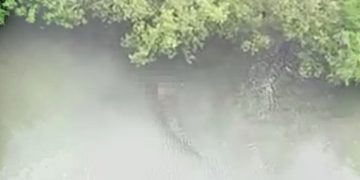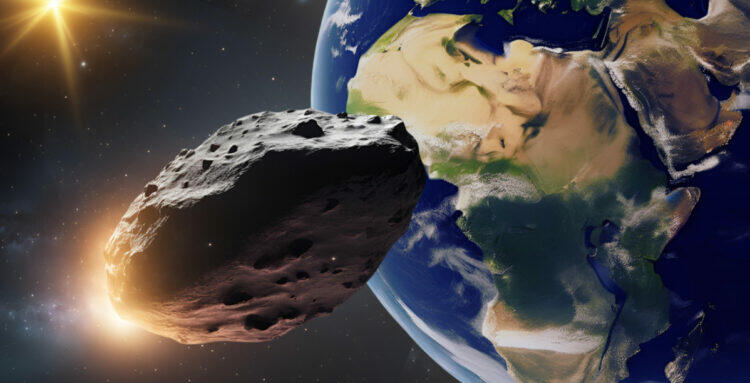This might sound like a sci-fi movie, but it’s real — an asteroid called 2024 YR4 has a small chance of hitting Earth. Scientists say there’s a one-in-43 (2.3 per cent) chance it could collide with us in 2032.
Not a guaranteed disaster, but enough for NASA to take it seriously.
NASA makes an emergency decision to assess the risk

Since this asteroid is a priority concern, NASA fast-tracked an emergency request to use the James Webb Space Telescope (JWST) to get better data.
“The Webb telescope will be crucial in helping us assess the true risk,” a NASA spokesperson said.
Time on JWST is tough to get, but when there’s a potential impact, they make an exception.
How big is the asteroid and why does it matter?

It’s estimated to be around 90m (300 ft) wide — about the size of the Statue of Liberty. Not an extinction-level rock, but big enough to cause major damage.
The Tunguska explosion in 1908 flattened over 2,150 square km of forest, and that asteroid didn’t even hit the ground.
“An impact of this size would cause regional devastation,” an ESA scientist explained.
How was 2024 YR4 discovered and why is it a concern?

Spotted last year by NASA’s ATLAS telescope in Chile, its impact risk was first 1.3 per cent, then jumped to 2.3 per cent. That put it at the top of NASA and ESA’s watchlist.
“This asteroid’s trajectory places it on the highest-priority watchlist, as even a small change in its path could have significant consequences.”
Why size estimates can be inaccurate
Right now, size is based on reflected light, which isn’t always reliable.
“The larger an asteroid, the brighter it will appear, but this is not always the case,” said a planetary defense expert.
A dark asteroid could be much bigger than expected, while a shiny one might be smaller.
How JWST will provide a clearer assessment
Since JWST orbits 1.5 million km from Earth, it avoids atmospheric interference, allowing precise measurements.
“This is one of the most precise ways to determine the asteroid’s true size and composition,” a NASA official said.
It will also reveal what the asteroid is made of — important because some materials burn up in the atmosphere while others don’t.
What damage could 2024 YR4 cause?

If it hit, the explosion could be equivalent to 15 megatons of TNT—100 times stronger than the Hiroshima bomb, which killed 100,000 to 180,000 people.
“A strike in a populated area could cause millions of casualties,” an impact expert warned.
That said, most of Earth is uninhabited, so chances are it would hit an empty area.
What are the next steps for scientists?

NASA and ESA will check in on 2024 YR4 twice — first in March when it’s brightest, then again in May. After that, it won’t be visible again until 2028.
“We will be watching this asteroid very closely,” said an ESA spokesperson. If risk levels increase, they’ll discuss the next steps.
Will the risk of impact decrease over time?
Most likely. Scientists expect that “the probability of 2024 YR4 hitting Earth should collapse towards zero as more data is collected.”
They’re only using four hours of JWST’s schedule to gather this data, and they’ve promised to make it all public.
“This is an opportunity to improve our planetary defense strategies,” an astronomer said. Even if this asteroid turns out to be harmless, it helps us prepare for future threats.
Scientists say time is running out to deflect 2024 YR4

Dr. Robin George Andrews isn’t hopeful about stopping it. “We might not be able to stop 2024 YR4,” he said. Deflecting an asteroid isn’t a quick fix — it takes at least a decade to plan and launch a mission.
Right now? We’ve got less than eight years. “You need 10 years or more to build, plan and execute an asteroid deflection mission. We don’t have much time,” he explained.
NASA’s DART mission proved deflection is possible, but it might not work this time

NASA’s 2022 DART mission showed we can change an asteroid’s path by crashing into it. But Dr. Andrews warns that’s not a guaranteed solution.
“It doesn’t mean we can use kinetic impactors like it to deflect any asteroid whenever we want. So much could go wrong if we try and hit it with something like DART,” he said.
The issue is that 2024 YR4 might not be a solid rock — it could be a loose “rubble pile.” If that’s the case, smashing into it wouldn’t push it away. It might just break apart, creating even more problems.
The odds are still low, but scientists need more data
For now, the impact risk is small. Dr. Andrews put it like this: imagine picking one button out of 43 — most likely, nothing happens, but there’s still a chance.
The good news? Scientists will track it closely, and odds are, more data will show it’s not a threat. “When more observations come in, it’s probable that the impact odds will plummet to zero,” he said.
But if it does hit, it wouldn’t be minor. We’re talking something the size of the Tunguska event in 1908 — the one that flattened 800 square miles of forest.
So yeah, fingers crossed it just keeps flying by. No need to panic!

















































